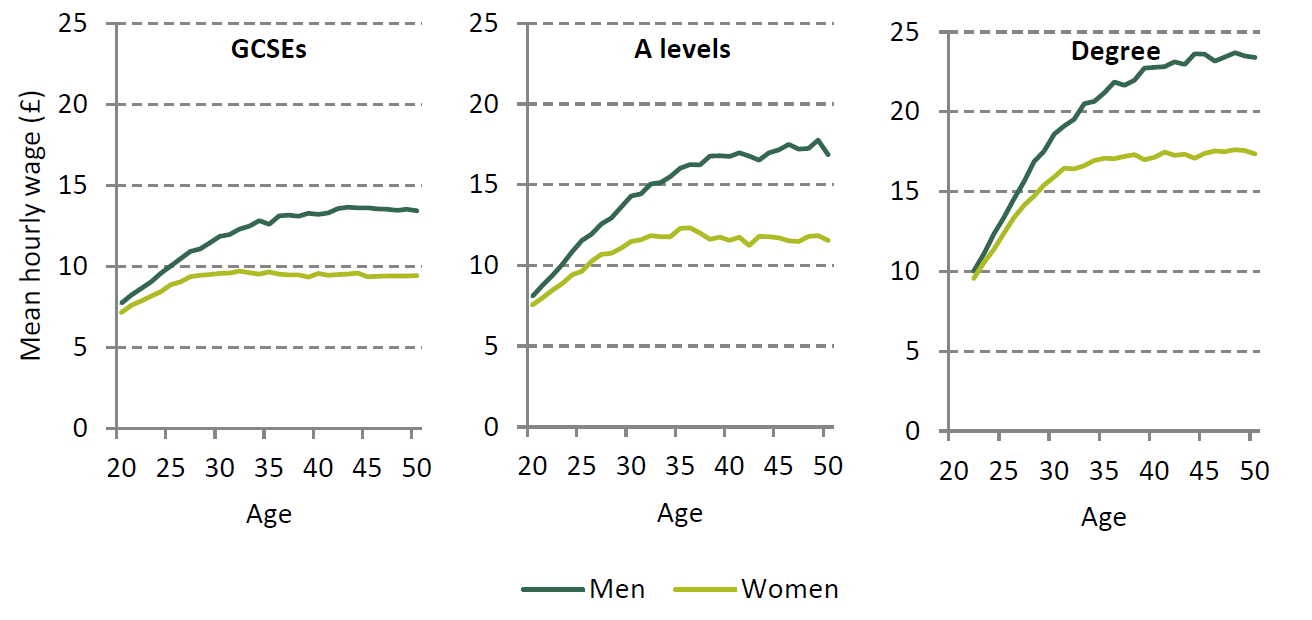We know that some workers earn far more than others. The latest data show that, in the UK in 2018, the lowest-wage 10% of employees earned no more than £7.95 per hour, while the top 10% started at £28.25. These disparities are clearly a core part of overall economic inequality, helping to drive differences in the homes people live in, the credit they have access to, the risks they can take, the opportunities they can provide for their children, what they have to live on in retirement, and so on.
The so-called ‘microdata revolution’ in social science means that we are increasingly able to piece together detailed information on how the lives of people, or cohorts of people, evolve as they age. As we have done this, a striking pattern has emerged. If you take a high earner and a low earner in mid or late career, you are likely to be looking only at the end product of a lengthy process of divergence. Their earnings were probably much more similar towards the start of their careers than they are now. In other words, earnings inequalities are, to a large degree, the result of differences in rates of pay progression.
The chart below illustrates this point for two of the most salient kinds of wage inequality: by education level and by gender. At age 22, average hourly wages range from £7.90 for a woman with no post-compulsory qualifications to £10 for a male graduate. But thereafter, wages grow far more steeply for the high-educated than for the low-educated; and, particularly from around the late 20s, they grow faster and for longer for men than for women. By age 50, the average hourly wage for a low-educated woman is £9.40 while for a male graduate it is £23.40.
Hourly wages over the life cycle

Note: Wages are shown in 2018 hourly wage terms. Individuals in the bottom two and top one percentiles of the gender- and year-specific hourly wage distributions are excluded.
Source: Figures are taken from Costa Dias, Joyce and Parodi (2018), which was based on Labour Force Survey 1993Q1–2017Q2, and then uprated from 2016 to 2018 real wage levels and prices.
The factors underlying this divergence are different between the two cases of education and gender: we know, for example, that a key part of the widening of the gender wage gap during the late 20s and 30s is due to mothers moving to part-time work after childbirth, which tends not simply to reduce total earnings but also to shut down growth in hourly wages. But what the education and gender differences have in common is that they are difficult to understand from a static perspective – they arise from how education and gender interact with the world of work and family life as people move through careers. Understanding these dynamics therefore looks crucial if we are to tackle pay disparities.
A number of questions arise. What are the roles of differences in training provision, the scope for learning on-the-job, or opportunities to progress up the occupational ladder or move to better-paying firms? In the case of the gender wage gap, what policy levers can be pulled to improve progression potential in part-time work or to increase rates of full-time maternal employment, and what are the pros and cons of those approaches? How does career progression by gender and education differ across countries and what can we learn from those differences? How powerful are tax credits – without other policies to improve pay progression – if just nudging people into work is not a stepping stone to progression but is instead the beginning of a prolonged period of low pay? And how are changes to the world of work affecting the prospects of pay progression among lower-paid groups?